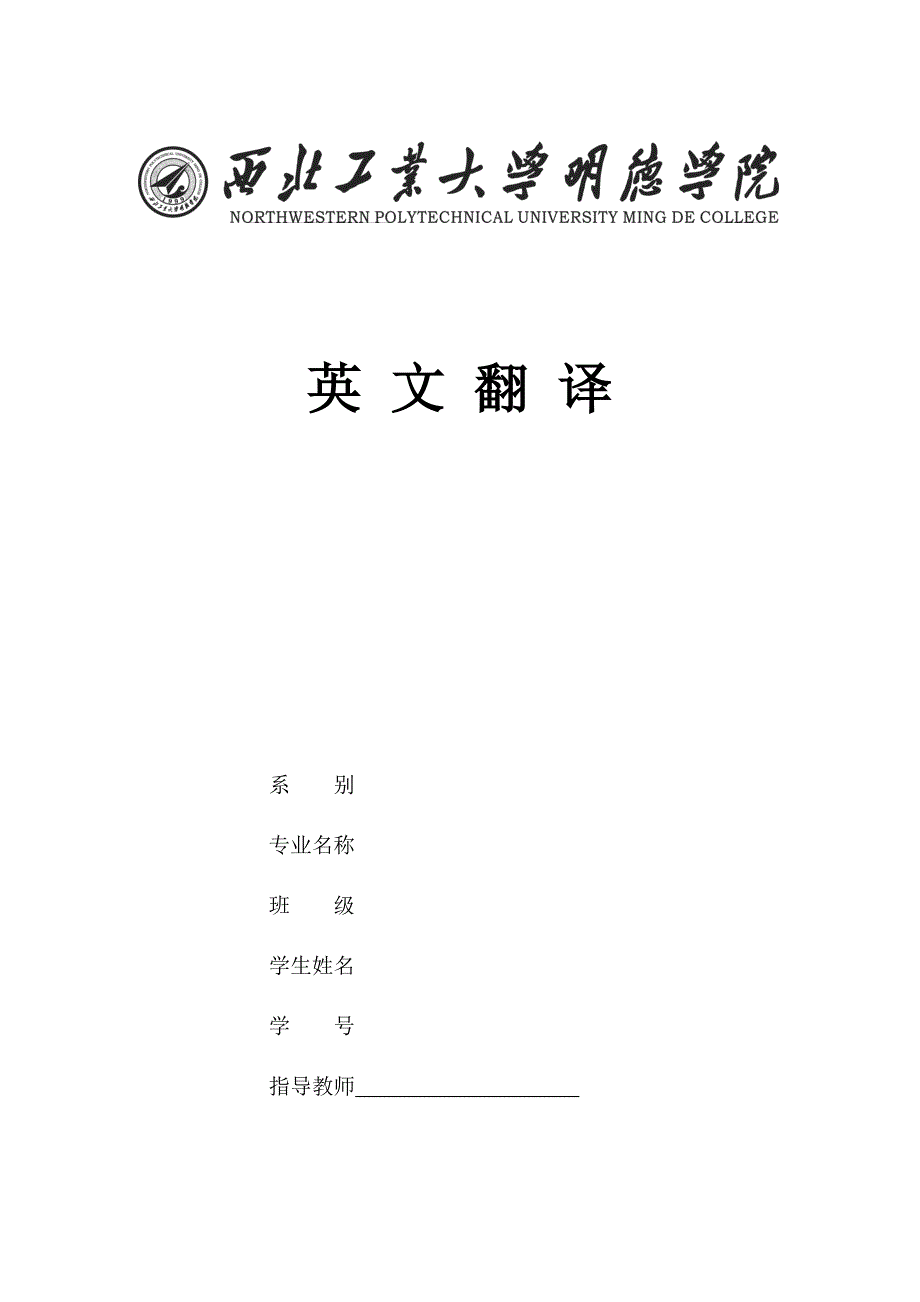资源预览内容
space
第1页 / 共13页
space
第2页 / 共13页
space
第3页 / 共13页
space
第4页 / 共13页
space
第5页 / 共13页
space
第6页 / 共13页
space
第7页 / 共13页
space
第8页 / 共13页
space
第9页 / 共13页
space
第10页 / 共13页
亲,该文档总共13页,到这儿已超出免费预览范围,如果喜欢就下载吧!
资源描述
英 文 翻 译 系 别 专业名称 班 级 学生姓名 学 号 指导教师 Information Fusion of Integrated Navigation Based on Self-adaptive Filter Abstract- In order to realize high accuracy and excellent reliability of navigation system, information fusion technology of integrated navigation based on self-adaptive filter is researched in this paper. Inertial navigation system (INS), global navigation satellite system (GNSS),synthetic aperture radar (SAR) and barometric altimeter (BA) are taken to construct INS/GNSS/SARIBA integrated system.INS is regarded as the primary navigation equipment, and other systems are aided navigation equipments. Firstly, errors of INS, GNSS, SAR and BA are modeled and chosen as system states of integrated navigation. Based on self-adaptive filter algorithm, output information of INS and GNSS are fused in INS/GNSS integrated navigation filter, and output information of INS, SAR and BA are fused in INS/SARIBA integrated navigation filter. Then the federated filter frame is designed, and estimations of system states from INS/GNSS and INS/SARIBA local filters are fused once more in the master filter independently.Consequently global optimal estimations of system states are given by the master filter, which are used to correct errors of INS. Simulation results show that,position accuracy of INS/GNSS/SARIBA integrated navigation reaches 1l.6m,attitude accuracy reaches 0.52,velocity accuracy reaches 0.14m/s, and its reliability is very excellent when noise statistics characteristics of some navigation equipment are variational in the navigation process.Keywords- information fusion; integrated navigation; selfadaptive filter; inertial navigation system; global navigation satellite system; synthetic aperture radar; barometric altimeter I.INTRODUCTION The accuracy and reliability of navigation system are more and more important for the modern flight task.Integrated navigation technology based on information fusion is an available approach to improve the accuracy and reliability of the navigation system . By fusing navigation information from all sorts of navigation equipments, integrated navigation can take full advantage of each non similar navigation sub-systems. Based on Wiener filtering, Kalman filtering,self-adaptive filtering and other information fusion technologies, the optimal estimates ofnavigation parameters can be obtained. At present, inertial navigation system (INS) is widely used in spaceflight, aviation and other fields. It has strong anti-interference capability, and can provide position,attitude, velocity and other parameters. But its errors accumulate with navigation time. Global navigation satellite system (GNSS) is the most precise navigation system in the world, but satellite signals of GNSS are subject to be interfered or shielded 2. Similarly, other modern navigation systems also have several disadvantages. However, accuracy, reliability and anti-interference capability of navigation system become more and more important for the modern aircraft. In order to realize higher accuracy and more excellent performance, it is necessary to take full advantage of each navigation system by information fusion technology.INS, GNSS, synthetic aperture radar (SAR) and barometrical time ter(BA)are taken to construct INS/GNSS/SARIBA integrated navigation system by information fusion technology in this paper. INS is regarded as the primary navigation equipment, and other systems are aided navigation equipments. Noise statistics characteristics of these aided navigation equipments are probably uncertain or variational during the navigation process, which will lower the accuracy of Kalman filter 3, so self-adaptive filter is adopted to design local filters of integrated navigation. In order to obtain global optimal estimations of system states, the federated filter frame and global optimal information fusion algorithm are designed. Thus high accuracy, strong reliability and good anti-interference capability are realized in INS/GNSS/SARIBA integrated navigation system. In this integrated navigation system, East-North-Up geography coordinate is chosen as navigation coordinate. INS, GNSS, SAR and BA are all mounted on the aircraft. INS outputs the position, velocity and attitude of the aircraft, GNSS output the position and velocity, SAR outputs the latitude and longitude of the position, and BA outputs the altitude. Errors of INS, GNSS, SAR and BA are chosen as system states of integrated navigation. The difference between position outputs of INS and GNSS, and the difference between velocity outputs of INS and GNSS are taken as the measurement of INS/GNSS integrated navigation. At the same time, the difference between position outputs of INS and SAR, and
网站客服QQ:2055934822
金锄头文库版权所有
经营许可证:蜀ICP备13022795号 | 川公网安备 51140202000112号
